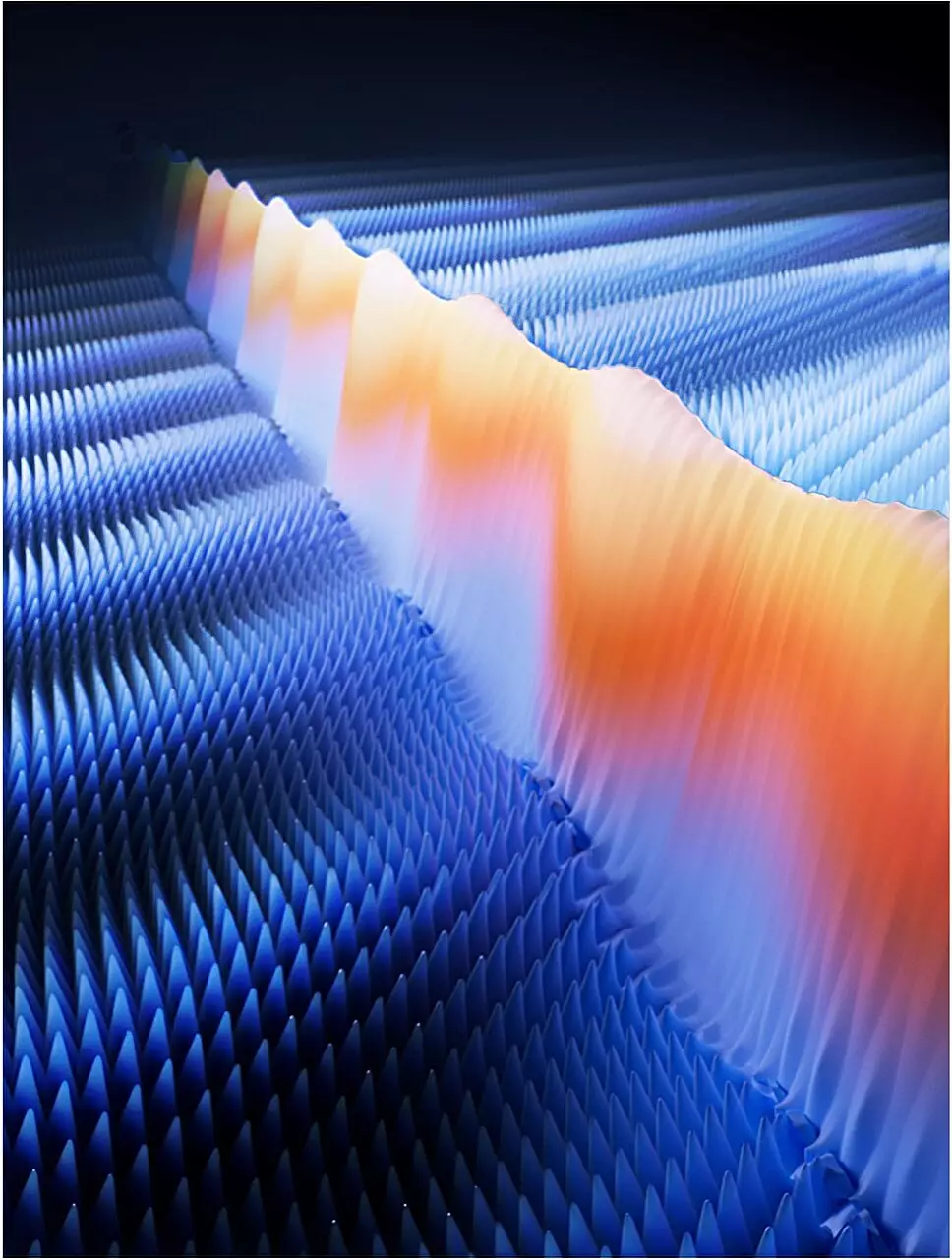Charge density waves (CDWs) represent one of the most captivating phenomena in condensed matter physics, illustrating the complexities of quantum behavior in solid materials. These waves emerge from a synchronized oscillation of electron density within a lattice structure, resulting in a periodic distortion of the material’s atomic framework. Found predominantly in high-temperature superconductors and quantum Hall systems, CDWs epitomize the dance between electrons and their surroundings, opening a doorway to unique states of matter. However, a significant gap exists between understanding these phenomena theoretically and observing them experimentally, especially concerning the boundary states linked to CDWs.
Pièce de Résistance: The Study of Ta2Se8I
A recent study from an ambitious international collaboration, featuring a team from Princeton University, has shone a spotlight on the topological material Ta2Se8I. This research—a cutting-edge exploration published in *Nature Physics*—explores the intricate connections between CDWs and topology, revealing novel insights that push the envelope of quantum material science. The team, led by Maksim Litskevich, has identified both the bulk and boundary modes of CDWs in Ta2Se8I, marking a pioneering leap toward unveiling the enigmatic relationship between these two quantum phenomena.
Litskevich’s enthusiasm echoes through the narrative: “Our group focuses on understanding the novel topological properties of quantum matter,” he shares, emphasizing the exciting landscape of Kagome materials characterized by their unique lattice arrangements and rich thermodynamic states. The Kagome family has proven fruitful in experimental contexts, and with this study, the spotlight shifts toward Ta2Se8I.
Exploring The Quasi-One-Dimensional Realm
In a fascinating turn, the researchers turned their attention to Ta2Se8I, a quasi-one-dimensional compound that displays topological features and transitions into a charge density wave state at temperatures below -10 degrees Celsius. Employing scanning tunneling microscopy (STM)—a powerful technique allowing researchers to visualize materials at the atomic level—the team probed the features of this exotic material. This technique hinges on quantum tunneling, permitting nanoscale explorations that unveil the secrets of electron behaviors within crystalline structures.
The STM measurements produced compelling data, leading to the identification of an in-gap boundary mode within the low-temperature CDW state. This observation was particularly riveting because it demonstrated the dynamic relationship between CDWs and topological properties, highlighting the interdependence of these quantum states. Such results not only affirmed their hypothesis but illuminated the intricate dance between electron density waves and topological facets.
Topology Meets Time’s Ticking Clock
One of the most striking outcomes of the study was the robustness of the in-gap boundary mode, withstanding temperatures as high as 260 K. This exceptional resilience is a hopeful beacon for future technological applications, as it could support the development of advanced computing systems harnessing topological properties. The significance of Ta2Se8I’s charge-ordered phase is emphasized when one considers its potential to integrate into theoretical frameworks of axion insulators—a highly anticipated phase in terms of quantum computation.
However, the study does reveal some unexpected conclusions that challenge existing theories. Litskevich and his colleagues encountered doubts regarding the classification of Ta2Se8I as an axion insulator. Their findings suggest a divergence from established notions, stimulating a rigorous re-evaluation of theoretical models surrounding this material.
A New Horizon in Quantum Materials Research
The revelations emerging from the investigation of Ta2Se8I set the stage for a deeper understanding of the confluence between charge density waves and topology. Researchers like Md Shafayat Hossain envision this work igniting broader scientific inquiry into these obscure quantum phenomena. “We anticipate our work will inspire new approaches to studying CDWs in topological materials,” Hossain said, hinting at the vibrant pathways ahead.
Following this groundbreaking study, Litskevich, Hossain, and their colleagues plan to delve into the fascinating interplay between charge density waves and superconductivity. The prospect of uncovering topological charge density waves as potential facilitators of advancements in quantum computing could ultimately reshape information technology in unimaginable ways. After all, the marriage of topology with quantum mechanics is a promising frontier poised to revolutionize computational techniques.
Such explorations forecast an exhilarating future for material science, where every discovery unveils new pathways and potentials. As the research team embarks on these forthcoming investigations, one cannot help but ponder the transformative implications of their findings—a testament to the hypnotic allure of quantum mechanics.

